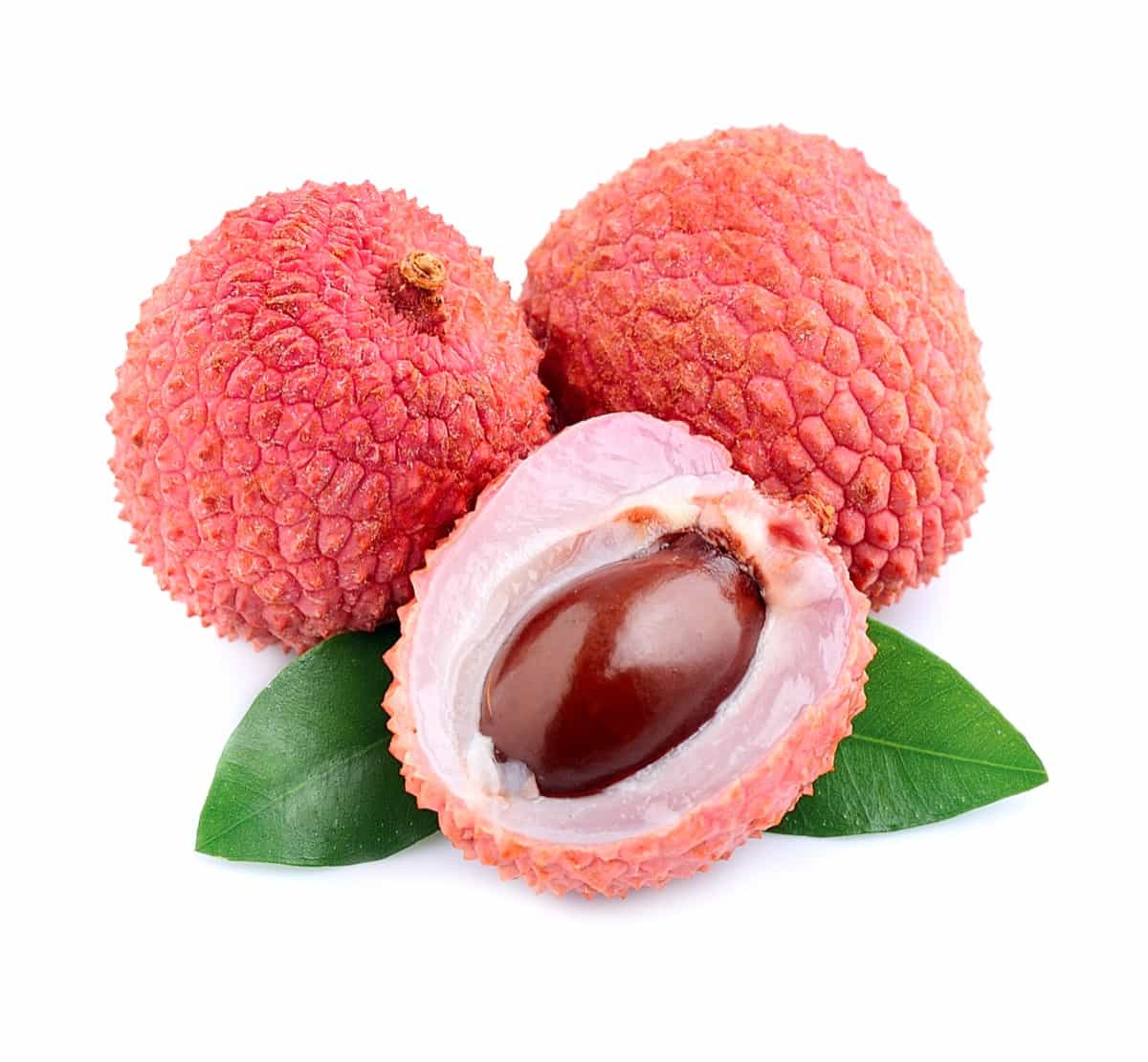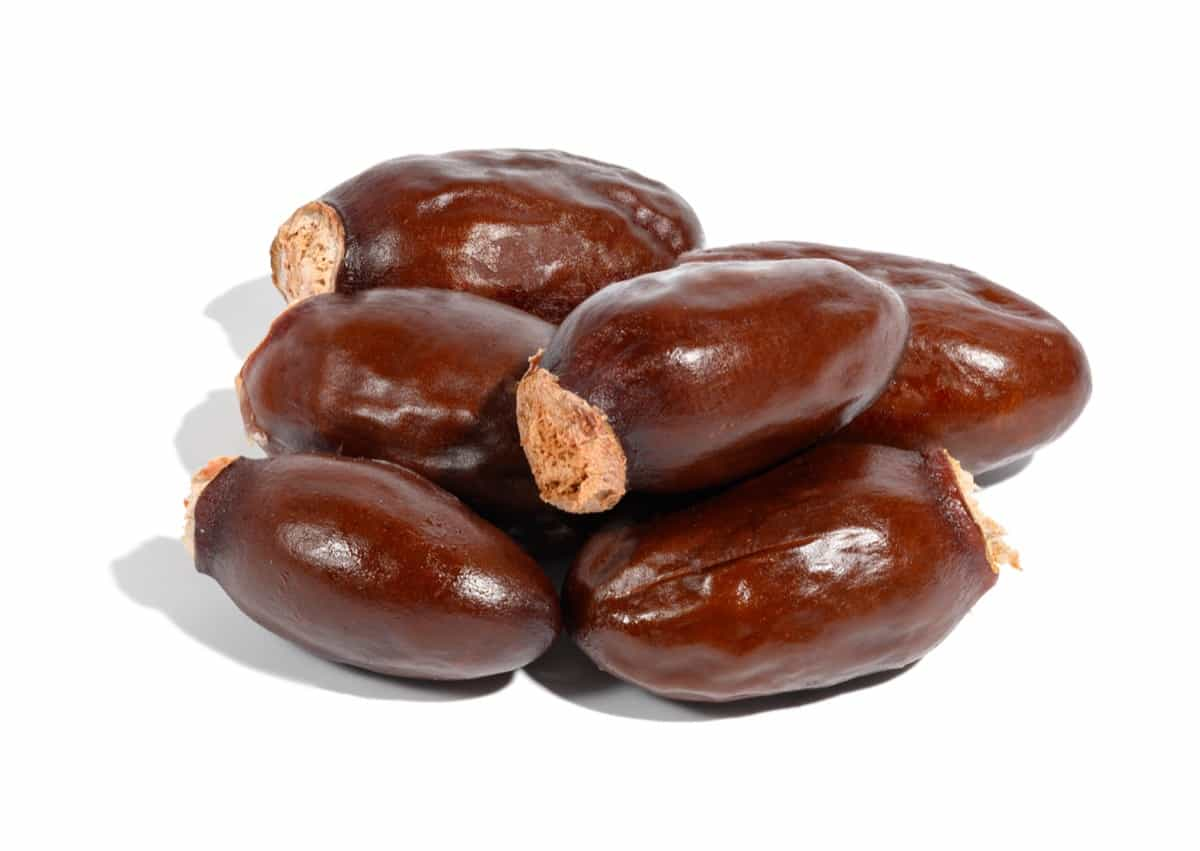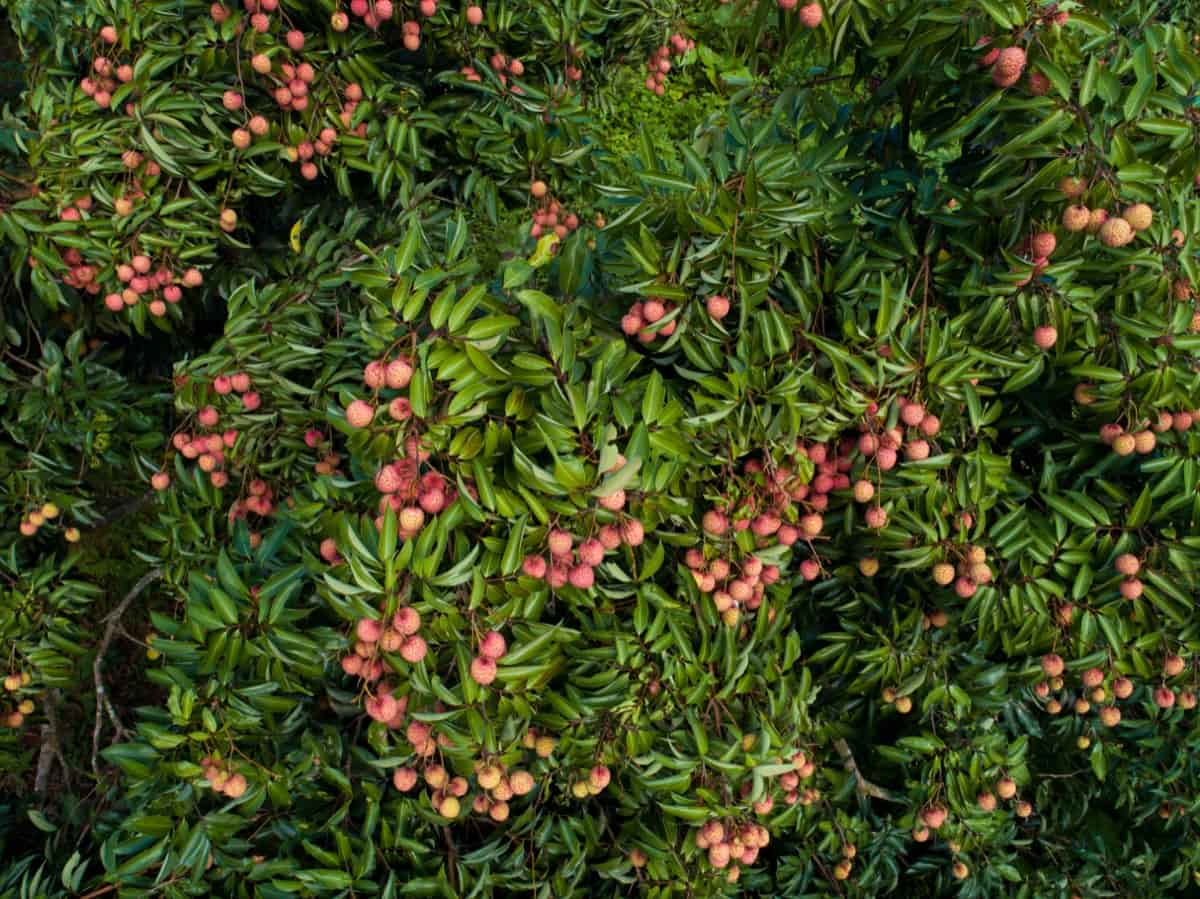Growing Lychee from seeds promotes sustainability for large-scale growers or nurseries. Growing Lychee from seed can be a rewarding and enjoyable experience. You can watch your Lychee tree thrive and produce delicious fruit with the right soil, proper fertilization, and patience.

How to Grow Lychee from Seed
Planting the Lychee Seeds: Choosing the Right Soil and Container
Start by selecting a well-draining potting mix that is rich in organic matter. A mixture of peat moss and compost works well as it provides good aeration for the roots and retains moisture without becoming waterlogged. Avoid using heavy clay soils or those with poor drainage, as they can lead to root rot. Next, consider the size of the container. While young Lychee seedlings can be planted in small pots initially, they will eventually outgrow them and require larger containers. Ensure that your chosen container has adequate drainage holes.
Selecting and Preparing the Lychee Seeds for Germination
It is an essential first step in successfully growing your Lychee tree. Start by choosing fresh, mature seeds from ripe Lychee fruit. Look for seeds that are plump, firm, and have a light brown color. How to make Lychee seeds germinate faster? To prepare the Lychee seeds for germination, soak them in water overnight. After soaking, carefully remove the outer shell of each seed using a pair of tweezers or your fingers. Be gentle to avoid damaging the delicate embryo inside.
Once the outer shell is removed, you may notice a thin papery layer surrounding the embryo. Gently peel off this layer as well to expose the white-colored seed within. Before planting the prepared Lychee seeds, it’s important to ensure they are moist. You can achieve this by placing them on a damp paper towel or cloth for several hours before planting.
Information about Growing Lychee from Seed
| Common Name | Lychee, litchi |
| Botanical Name | Litchi chinensis |
| Family | Sapindaceae |
| Sun Exposure | Full sun |
| Soil Type | Moist, well-drained |
| Soil pH | Acidic |
| Bloom Time | Spring |
In case you missed it: How to Treat Lychee Tree Leaf Curl Naturally: Causes, Fix with Effective Home Remedies

Creating Optimal Conditions for Lychee Seed Germination
Temperature: It thrives in warm environments, so maintain a Lychee seed germination temperature between 24-32°C. Use a heating mat or place the container in a consistently warm spot.
Light: While light exposure is not essential for Lychee seed germination, indirect sunlight or fluorescent lighting can encourage healthy growth once sprouting occurs.
Air circulation: Proper air circulation helps prevent mold growth and encourages stronger root development as seedlings grow. A small fan near the plants or gentle air movement from an open window can suffice.
How Long Does a Lychee Tree Take to Grow from Seed?
The process begins with germinating the Lychee seeds, which doesn’t take too long. In just around ten days, you’ll see signs of life as those tiny seeds sprout into delicate seedlings. While the initial growth may seem promising, don’t expect your tree to bear fruit right away. Lychee trees are known for their slow maturation process, requiring at least 5 years before they’re ready to bless you with their delectable bounty.
Providing Adequate Watering and Drainage for Lychee Seedlings
Water is crucial for the growth and development of any plant, and Lychee seedlings are no exception. Providing adequate watering and drainage for your Lychee seedlings is important to ensure healthy growth. Overwatering the Lychee plant can lead to fungal diseases that can harm young plants.
On the other hand, underwatering can cause stress and hinder their growth. Well-draining soil allows excess water to flow out of the container easily rather than sitting around the roots. This prevents waterlogged conditions that can suffocate or damage delicate roots.
Maintaining the Ideal Temperature and Humidity for Lychee Seed Growth
Maintaining the ideal temperature and humidity is crucial for Lychee seed germination time. Keeping the pot consistently moist and warm is important to give your seeds the best chance of germination. Lychee seeds thrive in temperatures between 24-32°C. This warm environment mimics their tropical natural habitat, promoting healthy growth.
Ensure that you provide a stable temperature range throughout the seedling’s development. To maintain Lychee seed germination conditions, water your Lychee seeds regularly but avoid overwatering as it can lead to rotting. The soil should be damp but not waterlogged. A well-draining potting mix will help prevent excess moisture retention. Humidity is equally essential for Lychee seedlings’ success.
In case you missed it: 10 Best Fruits to Grow in New Jersey: Easy and Top Fruit Trees for NJ

Nurturing Lychee Seedlings: Light, Air Circulation, and Fertilization
Light is a crucial factor in nurturing Lychee seedlings. These little plants thrive in bright but indirect sunlight. Place them near a window where they can receive ample light throughout the day. Air circulation is also important for the healthy growth of Lychee seedlings. Ensure proper ventilation in the area where you’re keeping your plants.
This will prevent excess moisture buildup and reduce the risk of fungal diseases. Fertilization plays a vital role in providing essential nutrients to young Lychee trees. Start by using a balanced fertilizer with equal proportions of nitrogen (N), phosphorus (P), and potassium (K). Adjusting your fertilization routine will help ensure your Lychee seedlings stay healthy and vibrant as they grow.
Transplanting Lychee Seedlings into Larger Containers or Outdoors
Once your Lychee seedlings have grown to a certain size, it is time to transplant them into larger containers or outdoors. Choose a container that allows room for the roots to spread out. Fill the container with well-draining soil mixed with organic matter. Gently remove the seedling from its pot, carefully not damaging the delicate root system.
If you prefer planting Lychee tree directly in the ground, select a sunny location with well-draining soil. Water thoroughly after transplanting and continue regularly to keep the soil moist but not waterlogged. Monitor your transplanted seedlings closely during this adjustment period, providing necessary support like stakes.
Pruning and Shaping Young Lychee Trees for Proper Growth
Pruning and shaping young Lychee trees is essential for their proper growth and development. When done correctly, pruning helps to maintain the tree’s shape, improve air circulation, and promote healthy fruit production. Start by removing any diseased branches. Next, prune any crossing or rubbing branches that may cause damage or inhibit airflow.
Identify a central leader branch that will become the main trunk to shape the tree. Remove competing branches too close in size or angle to ensure a strong central structure. Trim back excessive lateral growth to encourage upward growth and prevent overcrowding. Regular pruning during the first few years helps to create an open canopy with well-spaced branches. It’s important to strike a balance between removing excess foliage while still maintaining enough leaves for photosynthesis.
Protecting Lychee Trees from Pests, Diseases, and Environmental Stressors
One common pest that affects Lychee trees is the Asian citrus psyllid. These tiny insects feed on the tree’s Lychee plant leaves and stems, causing damage and potentially transmitting harmful diseases. To protect your Lychee tree from pests, regularly inspect its foliage for any signs of infestation.
If necessary, use an appropriate insecticide to control their population. In addition to pests, Lychee trees are susceptible to certain diseases, such as anthracnose and root rot. Anthracnose manifests as dark lesions on leaves or fruits, while root rot causes decay in the roots. To prevent these diseases from taking hold in your tree, practice good hygiene by removing any fallen leaves or fruit debris around the base of the plant.
In case you missed it: How to Identify and Treat Apple Maggot in Northwest: Prevention and Solution

Environmental stressors like extreme temperatures or drought can also impact a Lychee tree’s well-being. By proactively protecting your Lychee trees from pests, disease outbreaks, and environmental stressors, you’ll increase their chances of thriving into healthy mature plants producing delicious fruits.
Conclusion
Growing Lychee from seed requires patience, care, and attention throughout its lifecycle. By selecting high-quality seeds and properly preparing them for germination, you’ll increase your chances of success in growing healthy and fruitful Lychee trees at home.
- Feed Your Flock for Less: Top 10 Tips to Save on Chicken Feed
- Ultimate Guide to Ossabaw Island Hog: Breeding, Raising, Diet, and Care
- Hatching Answers: The Top 10 Reasons Your Chickens Aren’t Laying Eggs
- Eggs and Economics: Breaking Down the Cost of Raising Backyard Chickens
- Defend Your Greens: Proven Methods to Keep Iguanas Out of Your Garden
- Ultimate Guide to Cinnamon Queen Chicken: A Comprehensive Guide for Beginners
- Ultimate Guide to California Tan Chicken: Breeding, Raising, Diet, Egg-Production and Care
- Ultimate Guide to Marsh Daisy Chicken: Breeding, Raising, Diet, and Care
- 10 Types of Chicken Farming Businesses You Can Start for Profits